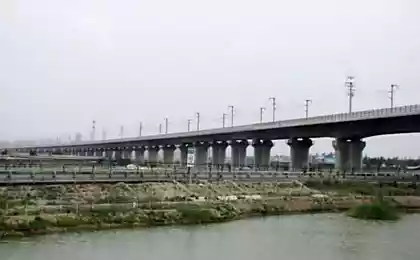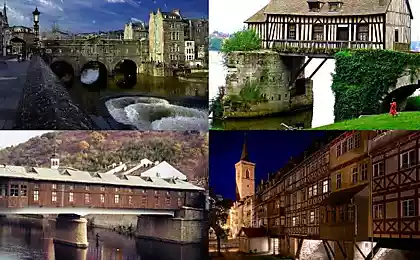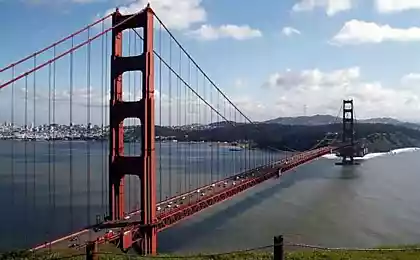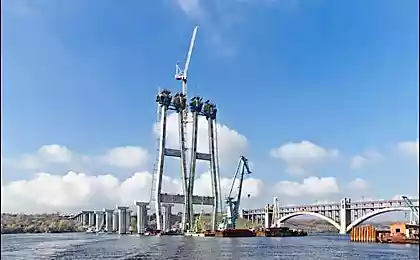5619
The most prominent water bridges in the world (20 photos)
Water bridges - a bridge structures that support water channels through which to navigate a relatively small vessels.
They are built over rivers, valleys, rivers, railroads or highways.
I bring to your attention the three most prominent water bridge in the world that still exist and function.
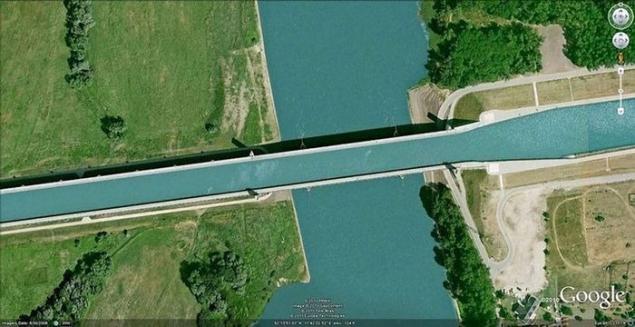
Magdeburg Water Bridge (Magdeburg Water Bridge)
The most popular and spectacular water bridge is located in Magdeburg, Germany. This is the longest navigable aqueduct in the world, with a length of 918 meters.
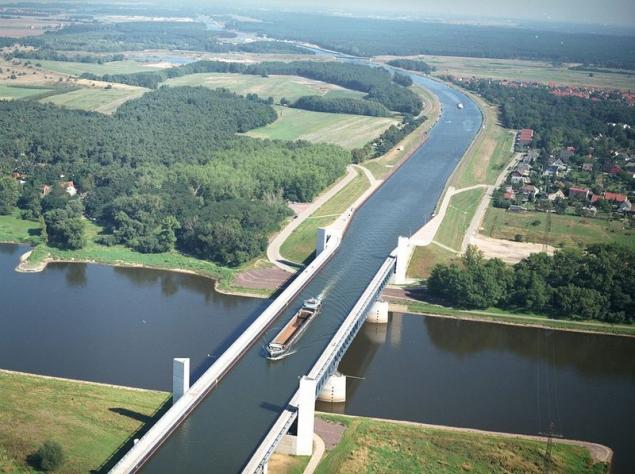
Opened in October 2003 as part of the Magdeburg waterways, it connects the Elbe-Havel Canal to the Mittelland Canal, crossing the river Elbe on top.
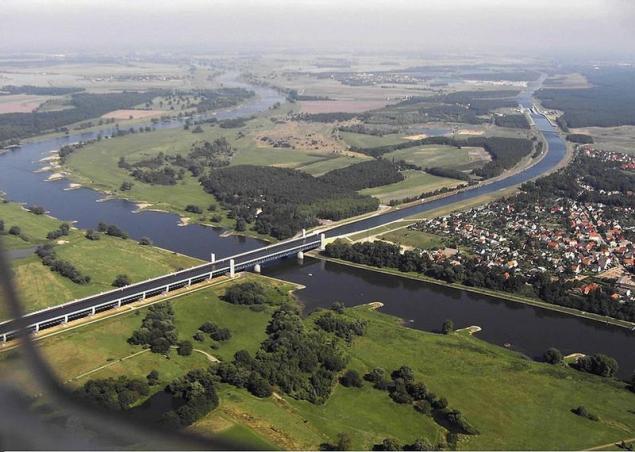
Elbe-Havel canals and Mittelland previously met near the town Maderburg, but on opposite bank of the Elbe, the water level is lower than in the two channels. Therefore, the ship, swam across from one channel to another, had to make a 12-kilometer loop and use gateways and boat lifts. And when the level of water in the river for loaded barges and this option becomes impossible.
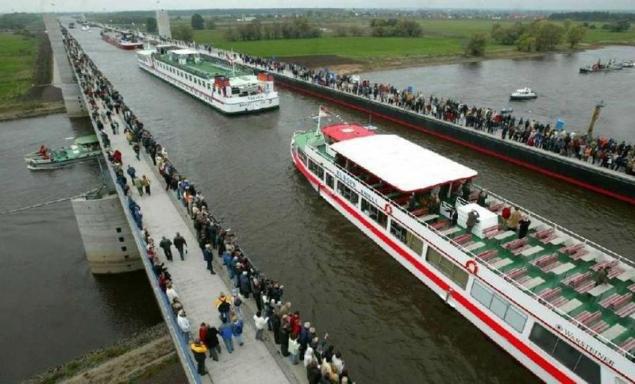
The reunification of Germany and the formation of major water transportation routes made the construction of a water bridge priority. Work began in 1997. As a result, construction took six years and 500 million euros.
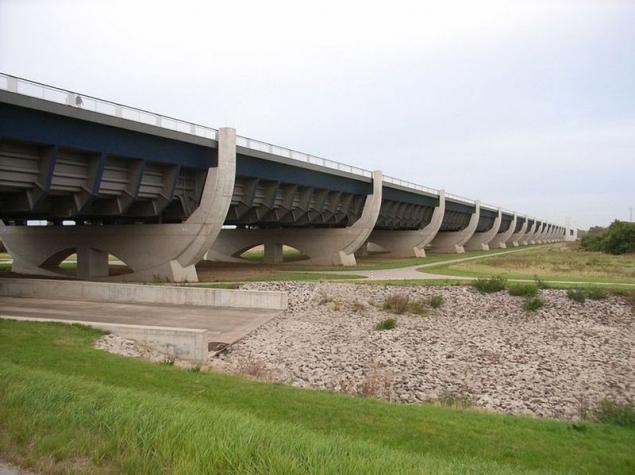
Now water bridge connects Berlin river port with numerous ports on the Rhine River.
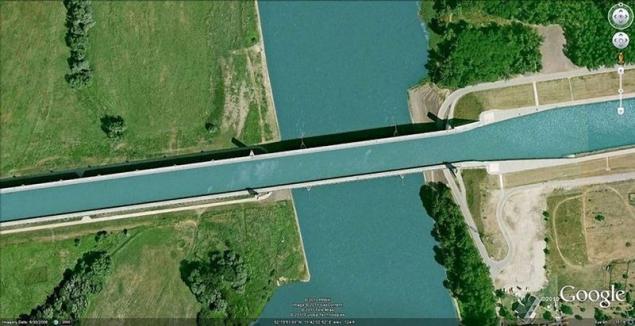
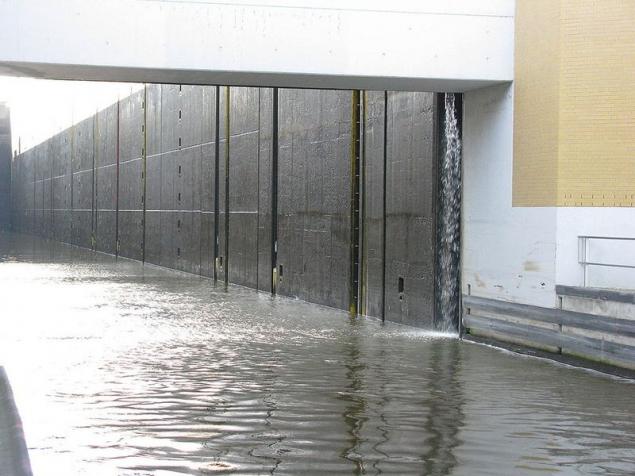
Pontcysyllte Aqueduct (Pontcysyllte Aqueduct)
Pontcysyllte Aqueduct in Vrekskheme, UK, was built in 1795-1805, respectively, to "bridge" Ellesmere canal through the valley of the River Dee and connect Denbigshira coal mines with the national system of canals during the Industrial Revolution.
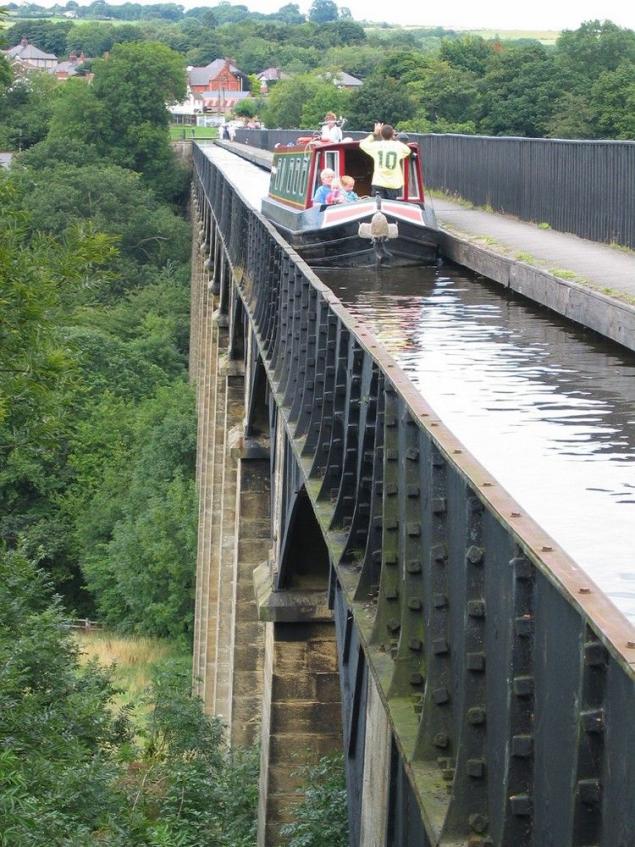
Aqueduct was one of the most significant achievements of the world at that time. For over 200 years, it remains the longest and highest aqueduct in Britain. In 2009, the aqueduct Pontkisilte was entered in the UNESCO World Heritage List.
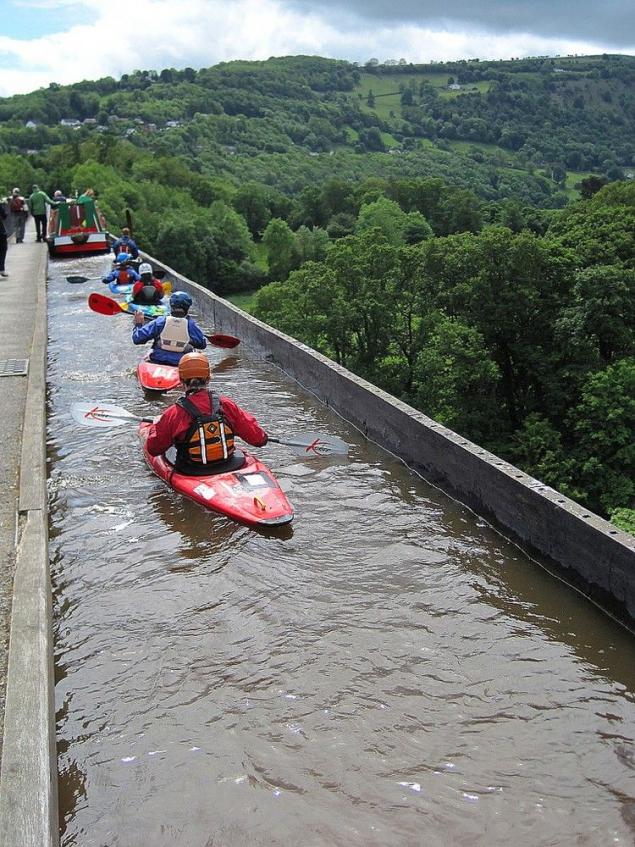
The length of the aqueduct is 307 meters, width - 3, 4 m, depth - 1, 6 meters. He is part of the 18-kilometer aqueduct system.

The aqueduct consists of a cast iron trough supported at a height of 38 meters above the river iron arches, resting on 19 hollow stone columns.
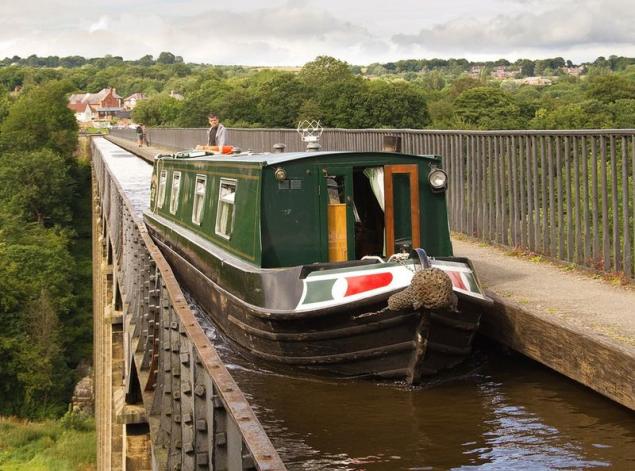
The use in the construction of the aqueduct of iron and steel allowed to make light and strong arches, creating at the same time the effect of monumentality and elegance.
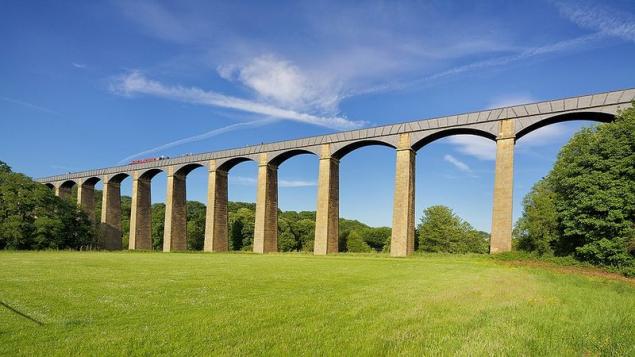
The channel has a significant impact on the economic well-being of the region during the first half of the 19th century, contributing to the rapid development of coal mining, metal processing, development lime quarries and lime production. Slate career in the mountains of Wales and agriculture also benefit due to the channel.
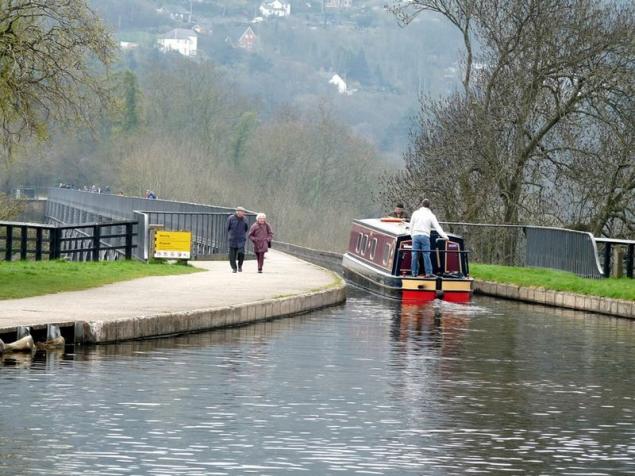
Today, the channel is no longer transports coal and lime, and is a very popular tourist destination.
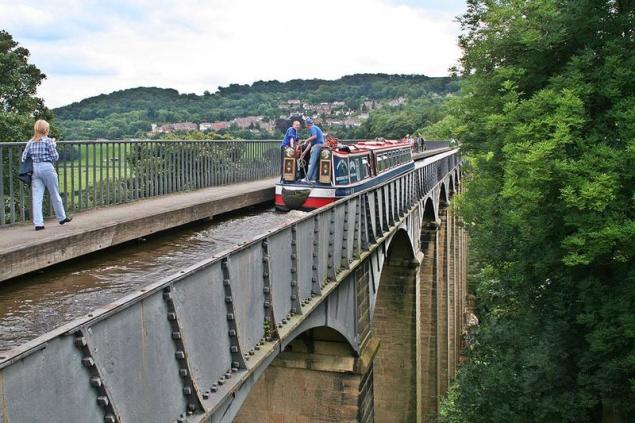
Since 1954, the channel is controlled and maintained in a condition suitable for navigation, the British Board of waterways.
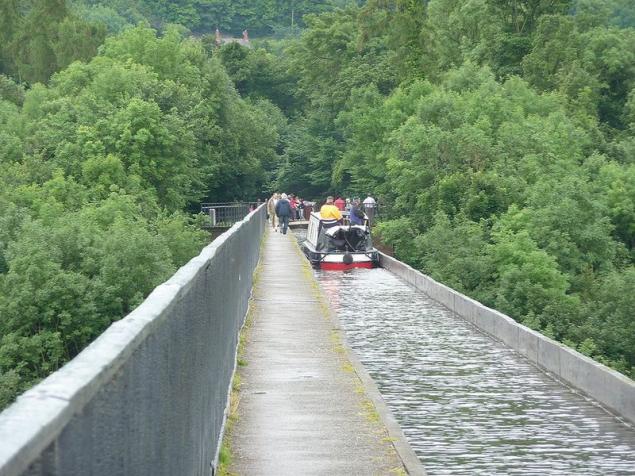
Swivel aqueduct at Barton (Barton Swing Aqueduct)
This rotary aqueduct - a mobile water bridge, located in Barton, England, on the River Irwell. He "carries" the Bridgewater Canal Manchester Ship Canal through.
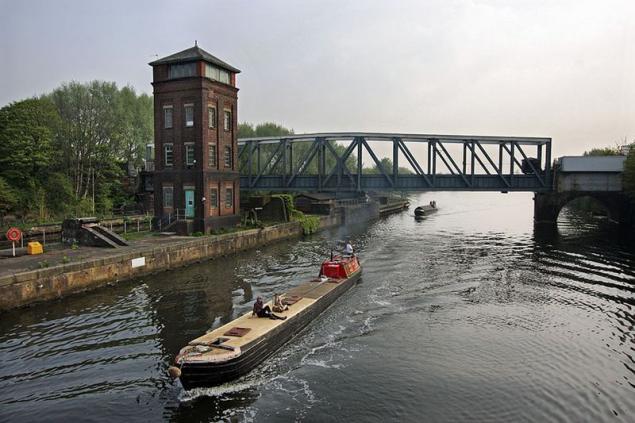
Swivel mechanism will allow more vessels to sail through the channel Manchester Ship, and a small narrow boat - cross it over the top. When a large ship must pass through the channel iron bridge 100 meters long and weighing 1450 tons is rotated 90 degrees.
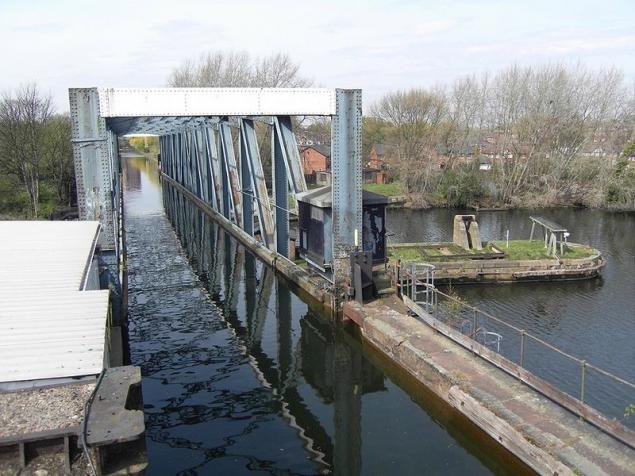
Gateways at both ends of the trough bridge hold about 800 tons of water. Other gateways, on the banks of the channel, retain water in the surrounding areas to the bridge. The same rotary bridge, but intended for traffic, is located here, just upstream.

This aqueduct is the first and only turning aqueduct in the world. It is considered a masterpiece of Victorian building art. Opened in 1894, the bridge is still regularly used for its intended purpose.
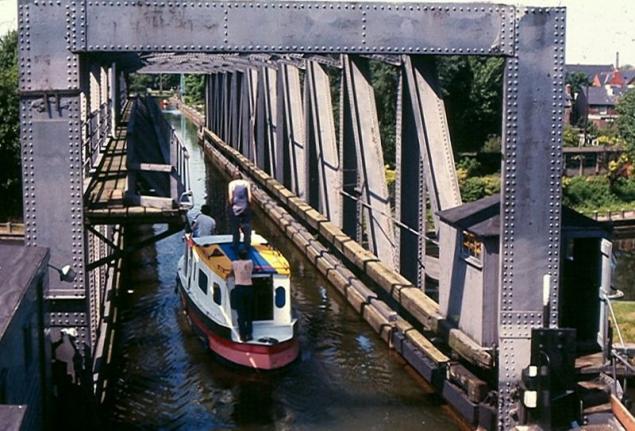
Earlier, in place of the water bridge was the usual stationary stone aqueduct, which did not allow to pass new vessels of large size. Therefore, the construction of Swing bridge has become a necessity.
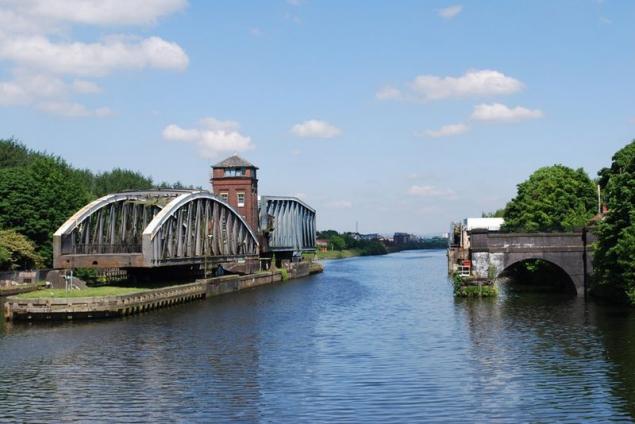
Swivel aqueduct (left) in a closed position by the intersection of the Bridgewater Channel and Manchester Ship. Road Swing bridge - on the right.
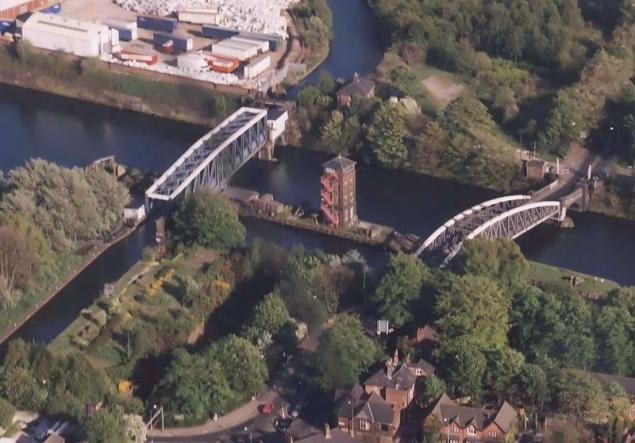
Source: bigpicture.ru
They are built over rivers, valleys, rivers, railroads or highways.
I bring to your attention the three most prominent water bridge in the world that still exist and function.

Magdeburg Water Bridge (Magdeburg Water Bridge)
The most popular and spectacular water bridge is located in Magdeburg, Germany. This is the longest navigable aqueduct in the world, with a length of 918 meters.

Opened in October 2003 as part of the Magdeburg waterways, it connects the Elbe-Havel Canal to the Mittelland Canal, crossing the river Elbe on top.

Elbe-Havel canals and Mittelland previously met near the town Maderburg, but on opposite bank of the Elbe, the water level is lower than in the two channels. Therefore, the ship, swam across from one channel to another, had to make a 12-kilometer loop and use gateways and boat lifts. And when the level of water in the river for loaded barges and this option becomes impossible.

The reunification of Germany and the formation of major water transportation routes made the construction of a water bridge priority. Work began in 1997. As a result, construction took six years and 500 million euros.

Now water bridge connects Berlin river port with numerous ports on the Rhine River.


Pontcysyllte Aqueduct (Pontcysyllte Aqueduct)
Pontcysyllte Aqueduct in Vrekskheme, UK, was built in 1795-1805, respectively, to "bridge" Ellesmere canal through the valley of the River Dee and connect Denbigshira coal mines with the national system of canals during the Industrial Revolution.

Aqueduct was one of the most significant achievements of the world at that time. For over 200 years, it remains the longest and highest aqueduct in Britain. In 2009, the aqueduct Pontkisilte was entered in the UNESCO World Heritage List.

The length of the aqueduct is 307 meters, width - 3, 4 m, depth - 1, 6 meters. He is part of the 18-kilometer aqueduct system.

The aqueduct consists of a cast iron trough supported at a height of 38 meters above the river iron arches, resting on 19 hollow stone columns.

The use in the construction of the aqueduct of iron and steel allowed to make light and strong arches, creating at the same time the effect of monumentality and elegance.

The channel has a significant impact on the economic well-being of the region during the first half of the 19th century, contributing to the rapid development of coal mining, metal processing, development lime quarries and lime production. Slate career in the mountains of Wales and agriculture also benefit due to the channel.

Today, the channel is no longer transports coal and lime, and is a very popular tourist destination.

Since 1954, the channel is controlled and maintained in a condition suitable for navigation, the British Board of waterways.

Swivel aqueduct at Barton (Barton Swing Aqueduct)
This rotary aqueduct - a mobile water bridge, located in Barton, England, on the River Irwell. He "carries" the Bridgewater Canal Manchester Ship Canal through.

Swivel mechanism will allow more vessels to sail through the channel Manchester Ship, and a small narrow boat - cross it over the top. When a large ship must pass through the channel iron bridge 100 meters long and weighing 1450 tons is rotated 90 degrees.

Gateways at both ends of the trough bridge hold about 800 tons of water. Other gateways, on the banks of the channel, retain water in the surrounding areas to the bridge. The same rotary bridge, but intended for traffic, is located here, just upstream.

This aqueduct is the first and only turning aqueduct in the world. It is considered a masterpiece of Victorian building art. Opened in 1894, the bridge is still regularly used for its intended purpose.

Earlier, in place of the water bridge was the usual stationary stone aqueduct, which did not allow to pass new vessels of large size. Therefore, the construction of Swing bridge has become a necessity.

Swivel aqueduct (left) in a closed position by the intersection of the Bridgewater Channel and Manchester Ship. Road Swing bridge - on the right.

Source: bigpicture.ru




